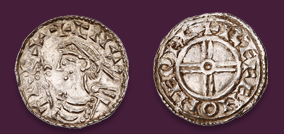
Auction: 18003 - Orders, Decorations and Medals
Lot: 502
Pair: Lance-Corporal W. L. Jenkins, 5th Battalion, Yorkshire Regiment, late Welch Regiment, who was captured on the first day of a highly successful German 'stormtrooper' infantry attack and later died as a result of sickness contracted whilst a Prisoner of War
British War and Victory Medals (57209 Pte. W. L. Jenkins, Welsh. R.), nearly very fine (2)
Walter Lloyd Jenkins was born on 28 November 1893, the son of John Lloyd Jenkins and his wife Matilda, of Brynhyfrydd, Radyr, Cardiff. According to records held by the International Committee of the Red Cross, he was posted as missing in France between March and June 1918, whilst serving with 'X' Company, 5th Platoon (sic) of the Yorkshire Regiment, and was later confirmed as a Prisoner of War.
The Third Battle of the Aisne, known as the Blucher Yorck offensive to the Germans, was the third and final offensive collectively known as the Kaiserschlacht, planned by General Erich Ludendorff to achieve a decisive attack on the Western Front and lead the German armies to within striking distance of Paris. It aimed to recapture the Chemins des Dames ridge, which was defended by four divisions of the British IX Corps, including men of the Yorkshire Regiment.
At 1.00 a.m. on 27 May 1918, the peace of this relatively 'quiet zone' was shattered by a huge artillery barrage involving over 4000 German guns. The bombardment was followed by the use of poison gas, following which 17 German sturmtruppen divisions under the command of Crown Prince Wilhelm advanced. Of events that morning, the 5th Battalion war diary states 'The bombardment was the heaviest yet experienced and heavy casualties were caused in the forward position on the plateau.' By 6.30 a.m. the German attacking forces had managed to get around both flanks of the plateau and 'The hostile barrage was maintained on the plateau and it is feared that many men were captured in the deep dugouts before they were able to come out.'
By 5.45am the 5th Battalion command post was surrounded and the 150th Brigade Headquarters ceased to exist with Brigadier-General Hubert Rees captured. The desperate situation is told in 1918: A Very British Victory by Peter Hart: 'Colonel Thomson rang up to say that the counter-attack he had launched had been swept away and that he was desperately fighting around his headquarters. He was afraid it was hopeless.'
Taken completely by surprise and with their defences spread thin, the Allies were unable to stop the attack and the German army advanced through a 40 km. gap in the Allied lines; on this one day alone, the 50th Division recorded 227 officers and 4879 other ranks killed, wounded or captured.
In attempting to make a run for it, Thomson was caught by a machine-gun bullet near Craonne. It was here also the Walter would be captured on the same morning.
The next day, 28 May 1918, Brigadier-General Rees would himself see the Craonne plateau, but as a guest of the Kaiser:
'Here, we were ordered to get out (of a car) and walk up the plateau. I was furious as I imagined that we were being taken to see some corps commander and thought it was deliberately humiliating. I made a remark to Laverick to this effect. The German staff officer with us overheard it and said, 'when you reach the top, you will see H.I.M. The Kaiser, who wishes to speak with you.'
Walter survived to see the cessation of hostilities, but his health had deteriorated as a prisoner of war and he died at home on 1 March 1919 aged just 25. He is buried with three other casualties of the Great War at Radyr (St. John the Baptist) Old Churchyard in Glamorgan.
For further details, see:
https://www1-yorkshires.org.uk/frank-and-sam-maltby/maltby-cousins-09.htm
https://www.pals.org.uk/rees.htm
Subject to 20% VAT on Buyer’s Premium. For more information please view Terms and Conditions for Buyers.
Sold for
£70




